
BOOT & FUN Berlin 2024 – We are exhibiting!
Hamburg, 17.11.2024 – After successfully participating in surf festivals in the north of Germany (Fehmarn) and a trade fair in the south,
In the following blog we present destinations for “surfing in winter” and the warm regions are our focus. Each destination is subdivided into the following points: Climate in winter, surfing conditions, top spots for beginners & advanced surfers, surf camps and courses, information about the region, budget and travel tips.
Have fun planning your next surf trip!
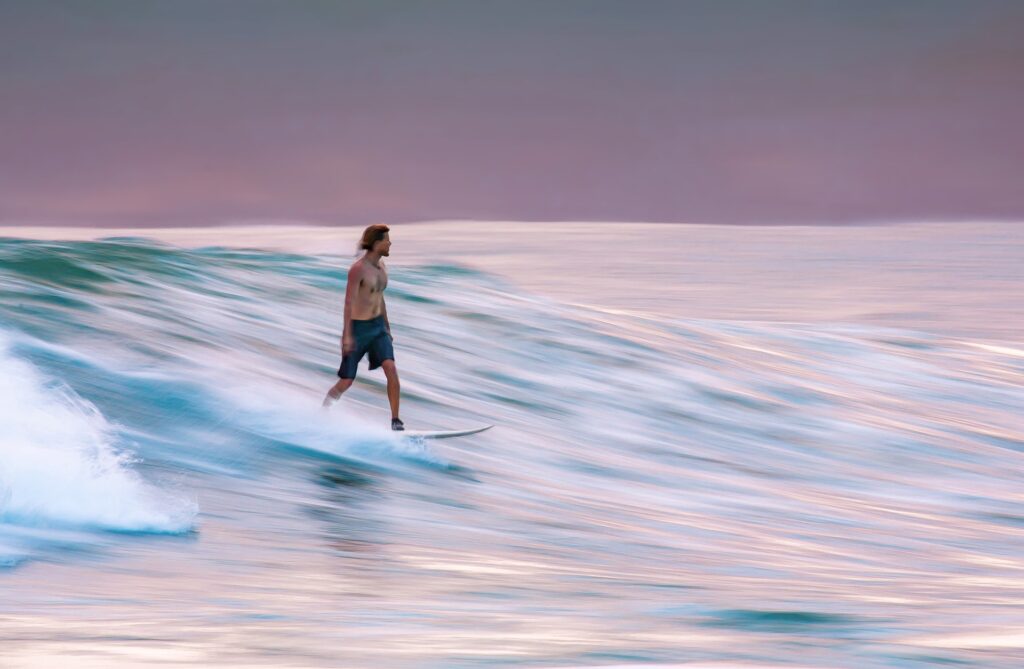
Warning: The following text could trigger strong wanderlust and lead to a spontaneous flight booking! We do not assume liability 😉 Especially at the moment when it is not really light outside and we are accompanied by the cold wind, rain and snow, the need for warmth, beach and sea increases. Walking barefoot in the sand without a care, feeling the sun on your face and enjoying one surf session after another – we can completely understand the pain of longing! But don’t worry, we’ll give the best information of eight different winter surfing destinations, so you don’t have to miss being close to the ocean. And who knows, maybe spontaneity wins and the belated Christmas gift for the partner will be two plane tickets to the warmth? 😉
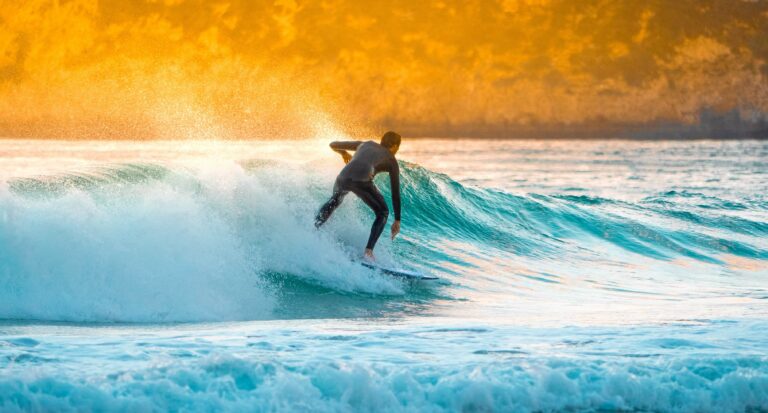
Winter climate
The Portuguese region of Algarve is one of the sunniest vacation destinations in Europe, which is why you can enjoy a mild winter here with about six hours of sunshine per day. The mountainous landscape protects the Algarve from cool air masses from the north, which is why the air temperature is around 18°C in the winter months. Nevertheless, the thermometer often rises above 20°C, although occasional rain showers must also be expected.
Surf conditions
From November to March, the Atlantic coast turns into a true surfing paradise! This is the best time to go surfing in the warm and a 3-4mm wetsuit is definitely enough with the water temperature around 16°C.
The Algarve is a true dream for surfing, as the swell comes from the south as well as west/northwest direction and brings constant waves.
Beginners: For beginners it certainly makes sense to look for a surf camp or surf school to learn how to surf. Good spots to learn can be found in: Lagos, Praia do Barranco, Praia do Amado and Carriagem.
Advanced: In the southernmost region of Sagres you will definitely find what you are looking for, e.g. Mareta & Tonel. Other options: Zavial, Beliche (professionals), Ponta Ruíva, Castelejo and Praia do Telheiro.
Surf camps and courses
There are numerous surf camps and schools in the Algarve, most of which are located in Lagos. When looking for a surf camp, make sure that you book a German or English speaking surf instructor. In Portugal there are also surf camps with yoga classes especially for women.
Info about the region
In general, the Algarve is a safe destination. Nevertheless, pickpocketing or car break-ins do occur, especially in tourist areas. It is best to leave all your valuables in the hotel safe. Since Portugal is part of the Schengen Agreement, you do not need to apply for a visa and can simply travel with your ID card.
Budget and travel tips
German winter is low season in Europe, which is why there are often many cheap deals on vacation homes and hotels. Especially for long term rentals you can get accommodation at a bargain price and spend the winter in Portugal. Local costs for food or restaurant visits are cheaper than in Germany, cost of living is comparable.
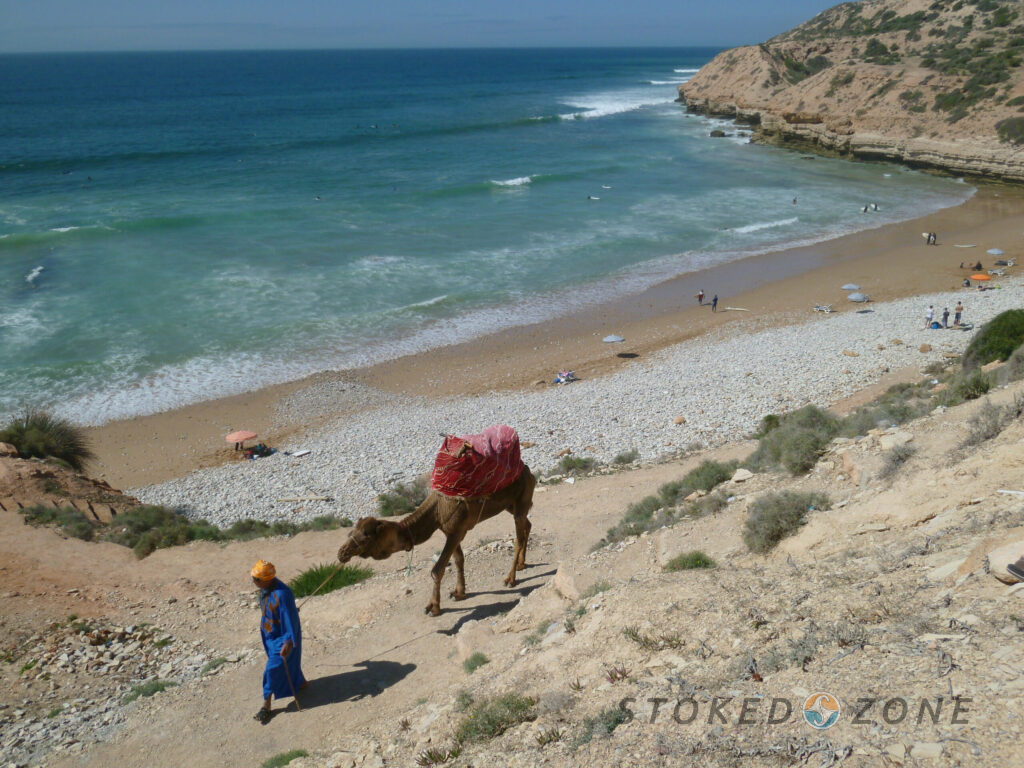
Winter climate
The popular region of Agadir in the south of Morocco is located on the Atlantic coast. Due to the subtropical climate, mild air temperatures of 20°C on average prevail even in winter. During the winter months, light precipitation must be expected.
Surf conditions
The area around Agadir is probably one of the most popular surf destinations in winter! Due to winter storms in the Atlantic Ocean, endless and constant waves break here from November to April. The surf breaks are not too crowded and also the water temperature is very pleasant with about 17°C. There are numerous surf breaks for beginners and professionals.
The best surf breaks in winter are about 1-2 hours north of Agadir. Among the best surfing spots are Taghazout, Tamraght and Imsouane. Fantastic waves also break on the Dakhla peninsula south of Agadir.
Beginners: Although challenging waves dominate here in winter, there are also many surf spots for beginners. These include: Camel Point (Taghazout), KM12 (Taghazout), Panorama (Taghazout), Banana Beach (Tamraght), Cro Cro (Tamraght) and Agadir Beach. Tip: Book a surf coach or surf course for effective and safe coaching.
Advanced: Advanced surfers get their money’s worth everywhere in winter. Popular surf spots are: Killer Point (Taghazout), La Source (Taghazout), Cathedral (Imsouane), Anchor Point (Taghazout) and Spiders (Tamraght).
Surf camps and courses
In the places mentioned above, over the years, both German and international surf camps have settled, offering surf courses for different levels. When choosing a suitable surf camp, there are a few criteria to consider, such as the language, number of students per coach, proximity to the beach and the availability of video analysis.
Info about the region
You can enter the country with your passport for up to 90 days without a visa (Visa on Arrival). The currency in Morocco is Dirham. We recommend carrying only small amounts of cash, as it is safer for one thing and credit cards are generally accepted. There can be thefts or robberies in tourist centers – better put valuables in the safe and be careful!
Budget and travel tips
Prices for accommodation and food are comparatively very cheap, which is why many Europeans escape the cold winter here. Book your flight as early as possible and your travel budget will certainly not be blown.
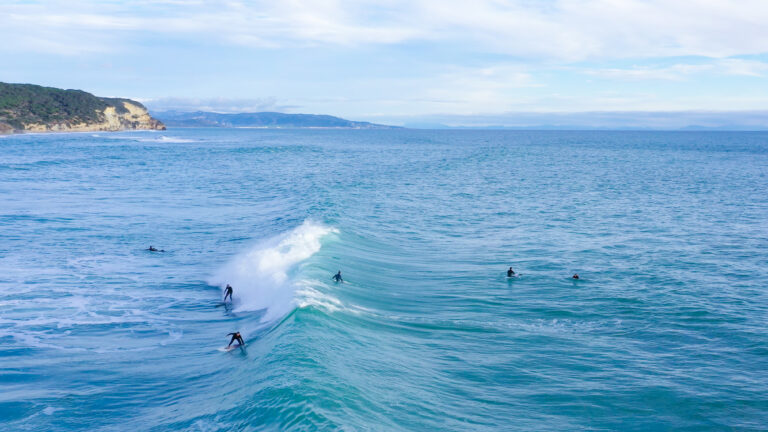
Winter climate
Those who choose the area around El Palmar in Andalusia as a destination for surfing in winter will be greeted with pleasant temperatures of about 16°C and lots of sunshine. Partly it also gets warmer and the thermometer rises above 20°C. In the winter months it can rain from time to time.
Surf conditions
The German winter is the best time to go surfing in Andalusia. The swell at this time is the largest and also the most regular. With a 4/3 wetsuit you are well prepared for your surf sessions at an average water temperature of 16°C.
Top spots for beginners & advanced
El Palmar is located on the Atlantic coast, so you can look forward to consistent swell here as well. The 8km long beach break offers plenty of line up space and a great selection of surf spots for all levels.
Beginners: A lot of space in the line up, no strong currents and many waves are ideal conditions to learn surfing. Among the best spots are: Playa El Palmar, Fuente de Gallo, Cadiz, La Barossa, Tarifa, Los Canos de Meca.
Advanced: More demanding and faster waves can be found here: El Coto, Los Canos de Meca, Barbate, Marbella and Hierbabuena.
Popular German-run surf camps include La Luz and A-Frame, which offer professional courses for beginners, intermediates and advanced surfers. There are also numerous surf schools for a taster course or individual lessons (especially around Playa El Palmar).
Info about the region
Andalusia is the southernmost province in the popular tourist destination Spain, which is considered a very safe destination. However, as in most tourist resorts, care must be taken with valuables, as pickpockets are not uncommon. With your identity card you can easily enter the country without a visa, just like in Portugal.
Budget and travel tips
To get there, we recommend flying to Malaga, Seville or Jerez de la Frontera, from where you can grab a rental car. The travel time from Malaga to El Palmar is about 2h 20min. From Seville to El Palmar you are in the car for about 2 hours. From Jerez de la Frontera you only need to plan 40 min, but not many airlines fly to this airport. The bus network is very well developed in Spain and could be an alternative to a rental car. Compared to other European destinations, local costs, especially fresh vegetables and fruits, are quite reasonable.
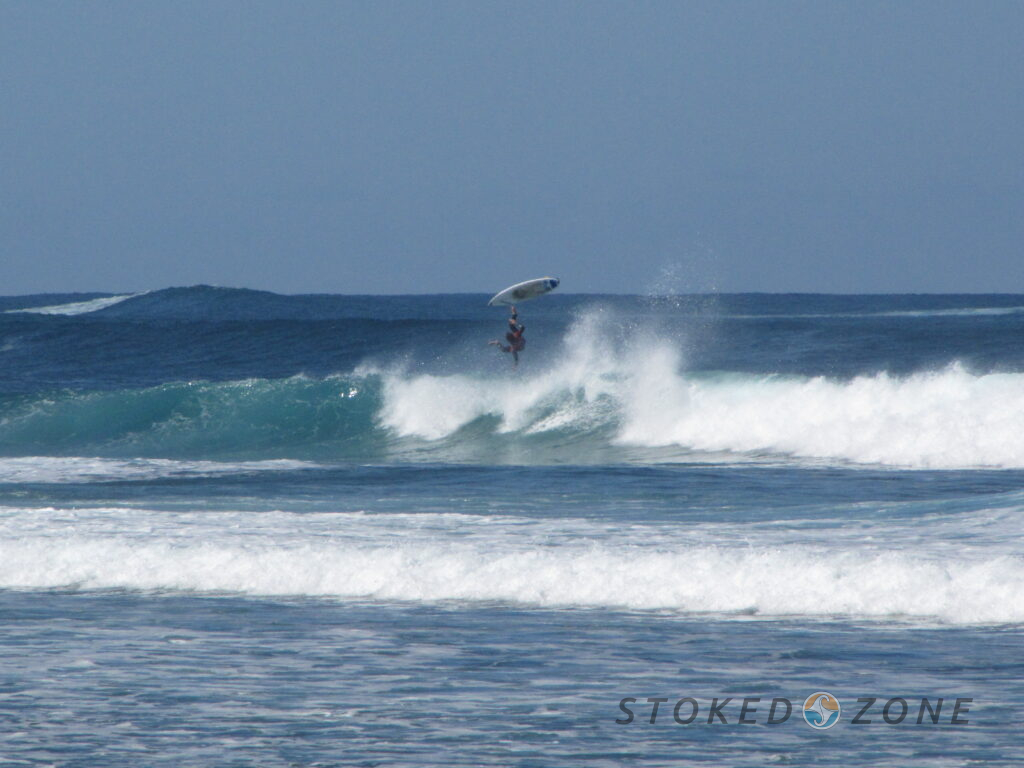
Winter climate
Not without reason Fuerteventura is also called “eternal spring”: Even in winter it gets pleasantly warm with around 20°C and countless hours of sunshine. Mild sunny days and little rain characterizes the region.
Surf conditions
In surfing circles, the nickname is also “Hawaii of Europe”, as constant swell hits the north coast all year round. Volcanic reefs and sandbars make for particularly high waves that challenge experienced surfers. In pleasant water temperatures around 19°C a 3/2mm neo is sufficient.
Top spots for beginners & advanced
The Reef Breaks at the North Shore should only be mastered by experienced surfers. However, there are also smaller bays with different beach breaks for beginners.
Beginners: Punta Blanca, El Cotillo, Playa del Moro
Advanced: Majanicho, Heirro and Yarro, Bubble, La Derecha De Los Alemanes, Mejiones,
Due to the popularity, there is a huge selection of surf camps on Fuerteventura, which are mainly established in the north of the island and mostly offer one-week surf courses. Among the most famous places are Corralejo, Cotillo or Lajares. The focus here is on German-speaking camps.
Info about the region
Although the island belongs to Spain, you don’t have to rely on your Spanish skills. Fuerteventura is so popular as a vacation destination among Germans that German is spoken almost everywhere. Here, too, your identity card is sufficient for entry. The island is also considered a very safe destination.
Budget and travel tips
The journey can be made comfortably by plane and then rental car. If you have your surf van and too many surfboards with you, you can also arrive by ferry. Overall, food and restaurant visits are cheaper than in Germany.
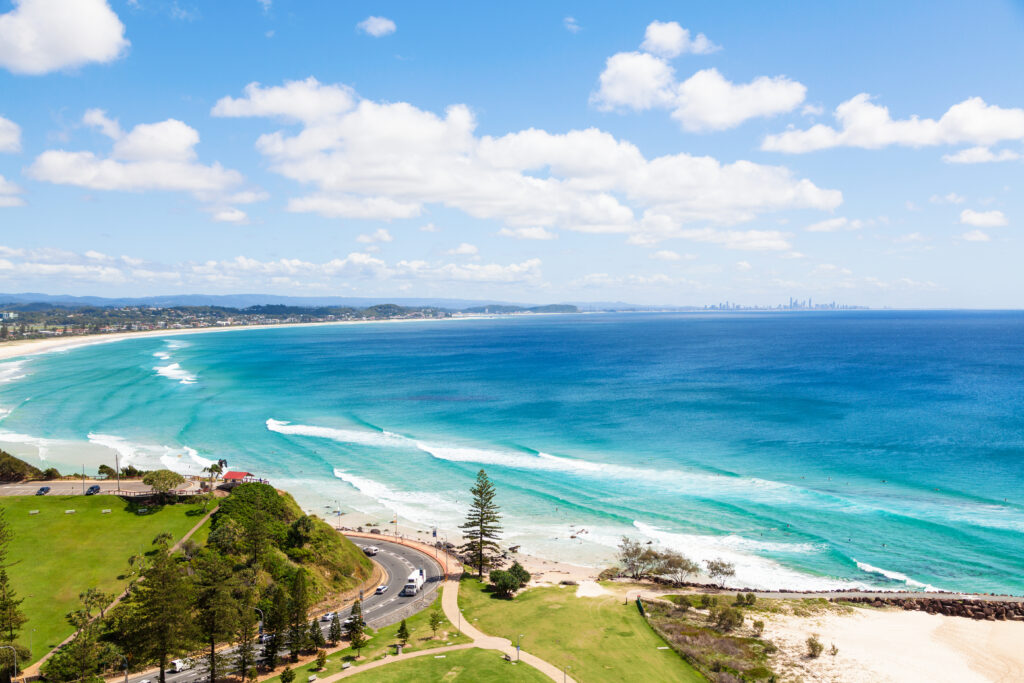
Winter climate
Again, you’re in luck: our winter months mean peak summer in Australia, with a glorious 27°C. The subtropical climate on the Gold Coast ensures 300 days of sunshine a year. Tropical rain showers can be expected from December to February.
Surf conditions
The Gold Coast, about 50 km long, is considered one of the most constant places for surfing at the east coast. Due to the geographical location in the ocean as well as the sandbanks off the coast, endlessly long and dreamlike waves break along the Gold Coast. The water temperature is about 25° C.
In general, the surf spots on the Gold Coast require some experience, but beginners won’t miss out either.
Beginners: Definitely – Bondi Beach! The popular beach just south of the Gold Coast is perfect for mastering the surfboard for the first time. Byron Bay, Surfer’s Paradise as well as Rainbow Bay are also ideal.
Advanced: South Bondi, Kirra Beach, Snapper Rocks, Burleigh Heads, Currumbin and Tugun. Insider tip: South Stradbroke Island.
Surf camps and courses
Many surf schools are located in Sydney, as Bondi Beach and the surrounding area are ideal for surf lessons. Alternatively, there are also many surf lessons in Byron Bay. Be prepared for mainly English speaking surf instructors. In the Burleigh Heads region there are surfing courses especially for women.
Info about the region
To enter the country, you must apply online for a visa or ETA(Electronic Travel Authority) before you start your trip, which will allows you to stay for 90 days. The currency is the Australian dollar. The crime rate in Australia is very low, but of course you have to take care of valuables as always. Be careful when renting a car: Here you have to drive on the left side of the road!
Budget and travel tips
Although the airfare will probably take up a large portion of your budget and the local costs are relatively high, there are many surf camps and accommodations available for backpackers. Plan an extra day after arrival to recover from jet lag.
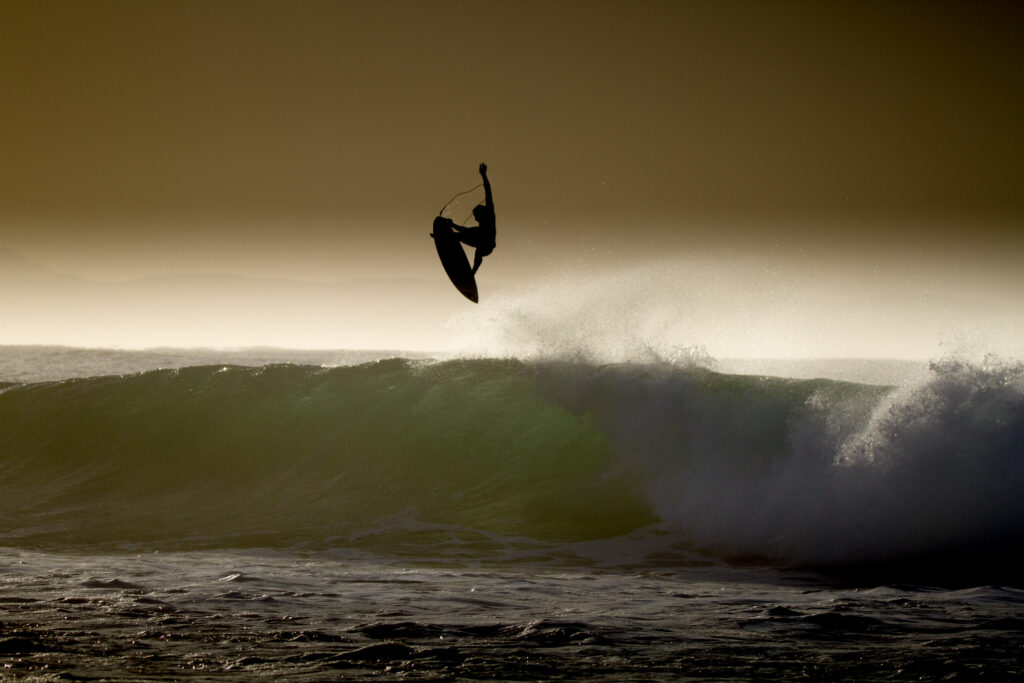
Winter climate
The advantage of a winter trip to South Africa: It’s summer here now! From November to March you will be spoiled with plenty of sunshine and hot temperatures between 24 and 34°C. A constant fresh breeze is also typical for summer.
Surf conditions
The South African summer is ideal for surfing beginners or even to try the sport for the first time. The wild storms in the Atlantic and Indian Oceans create huge waves in the South African winter and smaller waves in the summer there. The water temperature is about 17°C at the cooler Atlantic coast and about 21°C at the Indian Pacific.
Top spots for beginners & advanced
Most vacationers rent a car (watch out for left-hand traffic!) and discover the surf spots and diversity along the Garden Route.
Beginners: One of the best places to learn to surf is Port Elizabeth, as the city is located in a protected bay. In Muizenberg near Cape Town you can also encounter smaller waves.
Advanced: Advanced surf breaks can be found all along the coast. Among the best are Supertubes and Point (Jeffrey’s Bay), East & West Pier (Port Alfred), Inner and Outer Pool (Mossel Bay), Wedge (Plettenberg Bay), Long Beach (Cape Town).
Surf camps and courses
In all towns along the Garden Route there are numerous surf schools and private surf coaches offering either private lessons or weekly courses. There are also numerous surf camps with accommodations directly on the beach.
With your German passport you can enter South Africa as a tourist without a visa for up to 90 days. You will receive the “Visa on Arrival” directly at the airport. You may now be in Africa with a higher crime rate, but as long as you are mindful, without valuables and low on cash, you shouldn’t have any problems. Tip: Find out about safe vs. unsafe neighborhoods at your lodging.
Budget and travel tips
Although you have to dig a little deeper into your wallet for the long-haul flight, the local costs for food and restaurants are very reasonable compared to Germany, which makes up for the airfare. The months of December to February are peak season here, so it is worth booking accommodation well in advance. Tip: If you have longer time, the trip can be ideally combined with a side trip to Skeleton Bay in Namibia.

Winter climate
In our winter months it is summery warm and dry at the coast of Peru. The hottest and rainiest months are January and February (about 28°C), with the coast completely spared from rain.
Surf conditions
Chicama is located about 600km north of Lima, Punta Hermosa is just under an hour south of the capital. You can go surfing in Peru all year round, but winter is the north swell season here. This brings warmer water and very good waves, but less consistent than the south swell season. The water temperature of the Pacific Ocean is about 18°C.
Top spots for beginners & advanced surfers
Chicama: Chicama is known worldwide for the longest left breaking wave (about 2km), which works best in June due to the offshore wind conditions and orientation of the coast. But even in our winter there are numerous waves here, as well as sun and barrels galore. In Chicama, beginners and advanced students get their money’s worth.
Punta Hermosa: In the surf town La Isla offers good surf conditions for beginners and intermediates. The other surf spots are more suitable for advanced surfers. These include: Playa El Norte, Senoritas & Caballeros, Punta Rocas and Playa Arica.
Surf camps and courses
Peru is becoming more and more popular as a surf destination worldwide, which is why you will find a great selection of surf resorts for every level. Often the surf courses are also combined with soothing yoga sessions. There are also private surf trips and surf lessons.
Info about the region
Crime is higher in South America than in Europe. Especially in tourist centers and the capital Lima you should be more careful on the road. Bribes are common here due to low wages. You don’t need a visa to enter the country, with your passport you can spend up to 90 days here.
The surf villages offer numerous restaurants, cafes and hippie stores. Local prices for food, restaurant and transportation are about 30% cheaper than in Germany and are paid in the currency Sol. On weekends, many people from Lima come to Punta Hermosa to check out the bars. Currently and due to a government crisis you should inform yourself about travel warnings for Peru at the Foreign Office.
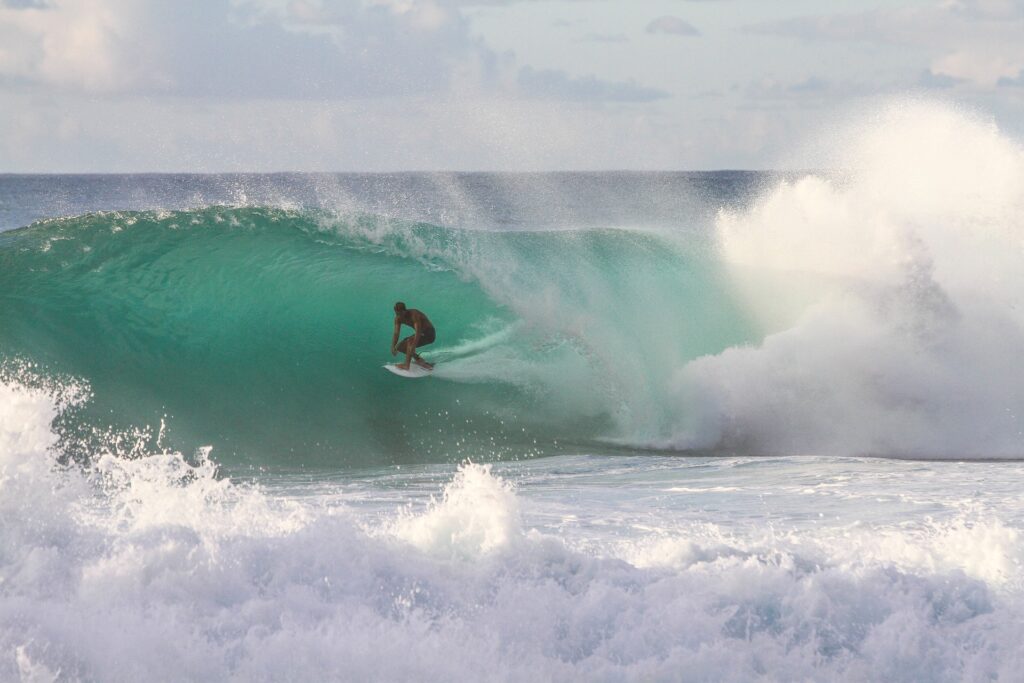
What to consider when planning your trip to surf in the European winter – here you will find our top 10 tips summarized:
For further travel planning, you can also read our blog “All about surf equipment – what do I need for surfing?“
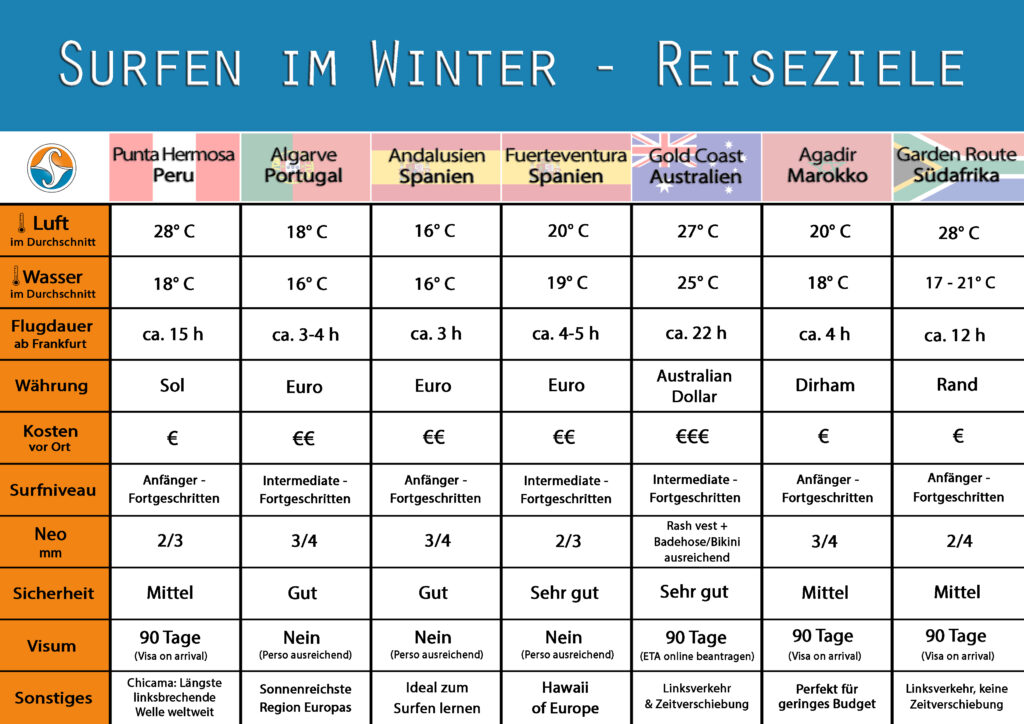
For more winter destinations, feel free to check out ourJanuary Surfing blog.
We wish you a lot of fun planning your trip, a nice vacation and good surfing conditions!
Your Stoked Zone Team

Hamburg, 17.11.2024 – After successfully participating in surf festivals in the north of Germany (Fehmarn) and a trade fair in the south,
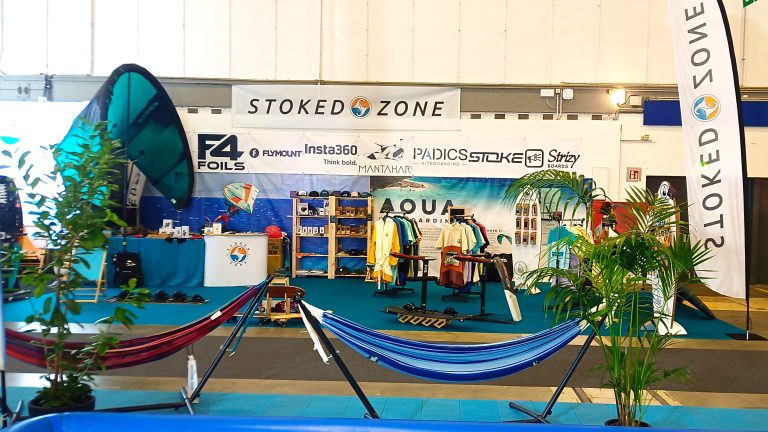
Hamburg, 10.12.2024 – Boot & Fun Berlin was another success for the development of the Stoked Zone as a platform for surf sports
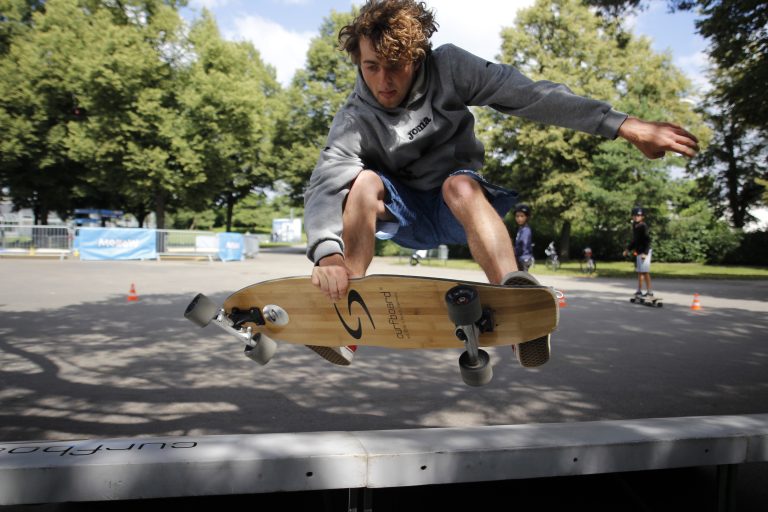
Hamburg 25.11.2024 We are very pleased to announce our partnership with the premium surfskate brand Curfboard.Curfboard is a German company with a